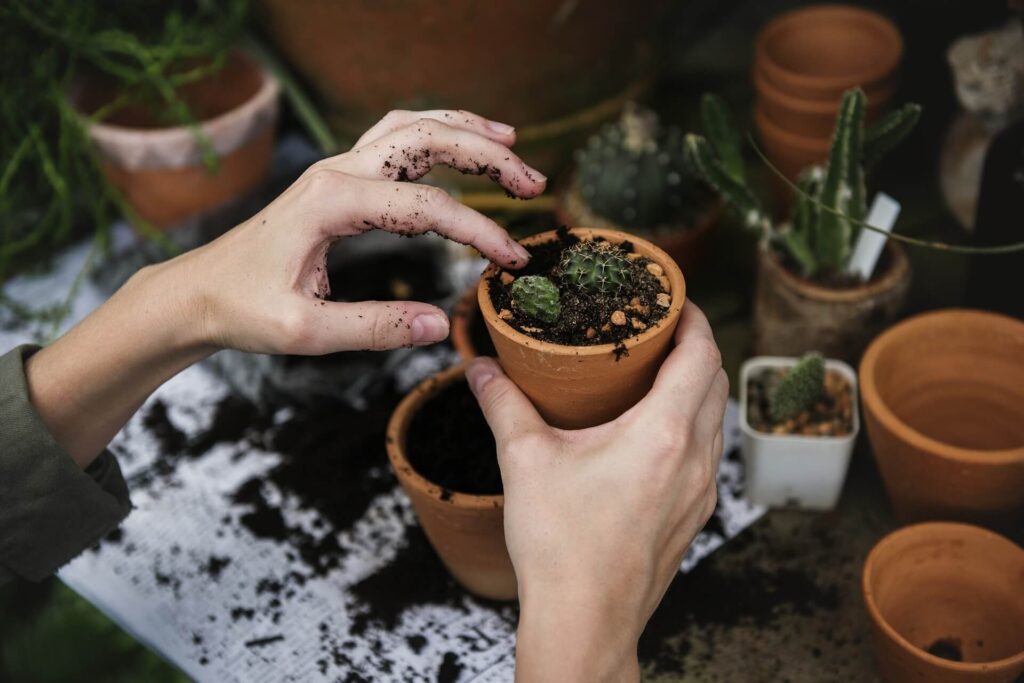Indoor plants, often referred to as houseplants or potted plants, have become an integral part of modern home decor. Not only do they add life and beauty to any room, but they also improve air quality and create a calming atmosphere. If you’re new to indoor plant care, the idea of keeping plants alive may seem daunting. However, with the right tips and knowledge, growing indoor plants can be a rewarding and relatively low-maintenance hobby. This blog will provide a complete guide on how to start growing houseplants, including selecting the right plants, creating the proper environment, and maintaining their health.

Why Grow Indoor Plants?
Indoor plants offer many benefits beyond just aesthetics. Studies have shown that houseplants can help reduce stress, boost productivity, and even improve mood. They act as natural air purifiers by absorbing toxins and releasing oxygen, which is particularly beneficial in closed spaces. Moreover, certain plants, like aloe vera or lavender, have medicinal properties and can be used in home remedies.
By growing indoor plants, you bring a small part of nature into your home, making your living space more vibrant and comfortable. Plus, taking care of plants can be a therapeutic activity that promotes mindfulness and relaxation.
Choosing the Right Indoor Plants
When starting with indoor plants, selecting the right varieties is crucial. Some plants thrive in low light and require minimal maintenance, making them ideal for beginners. Here are a few popular choices for indoor plants:
- Snake Plant (Sansevieria): Known for its hardy nature, the snake plant is perfect for beginners. It can tolerate low light and requires little watering, making it easy to care for.
- Spider Plant (Chlorophytum comosum): Another low-maintenance plant, the spider plant is great for hanging baskets and purifies the air effectively.
- Pothos (Epipremnum aureum): This vine-like plant is highly resilient and grows well in both bright and low light conditions. Its trailing vines add a touch of elegance to any space.
- Aloe Vera: Aloe vera not only looks beautiful but also has medicinal properties. It requires bright, indirect sunlight and minimal watering.
- Peace Lily (Spathiphyllum): With its elegant white flowers, the peace lily thrives in low light and is excellent for purifying indoor air.
Creating the Right Environment for Indoor Plants
Indoor plants need an environment that mimics their natural habitat to thrive. This involves providing the right amount of light, humidity, temperature, and water. Here’s a breakdown of the key factors to consider:
- Light: Light is the most critical factor for indoor plants. Most houseplants prefer indirect sunlight, which can be achieved by placing them near windows with filtered light. If you have limited natural light, consider low-light plants like snake plants or ferns. Alternatively, you can use grow lights to provide the necessary light spectrum for your plants.
- Humidity: Many indoor plants, especially tropical ones, prefer high humidity levels. You can increase humidity by misting the leaves with water, using a humidifier, or placing a tray of water near the plants. Grouping plants together can also create a more humid microenvironment.
- Temperature: Most indoor plants thrive in temperatures between 18°C and 24°C. Avoid placing plants near drafty windows, doors, or heating vents, as sudden temperature changes can stress the plants.
- Watering: Overwatering is one of the most common mistakes when caring for indoor plants. Always check the soil’s moisture level before watering, and only water when the top inch of soil is dry. Use pots with drainage holes to prevent water from sitting in the soil and causing root rot.
Maintaining Healthy Indoor Plants
Keeping your indoor plants healthy involves regular care and attention. Here are a few tips for maintaining thriving houseplants:
- Repotting: As plants grow, they may outgrow their pots and require repotting. This process involves transferring the plant to a larger pot with fresh soil, allowing the roots more space to grow.
- Pruning: Regularly trim dead or yellowing leaves to promote new growth. Pruning helps keep plants looking neat and prevents diseases from spreading.
- Fertilizing: Indoor plants need nutrients to grow, and since they can’t get them from the soil outside, you’ll need to use fertilizers. Use a balanced, water-soluble fertilizer every 4-6 weeks during the growing season (spring and summer) to provide your plants with essential nutrients.
- Pest Control: Occasionally, indoor plants may attract pests like aphids or spider mites. If you notice any insects, remove them manually or use a natural pesticide, such as neem oil, to treat the infestation.
- Rotate Plants: To ensure even growth, rotate your plants regularly. This helps them receive sunlight on all sides and prevents them from leaning towards the light source.
Common Mistakes to Avoid
Even experienced plant owners can make mistakes when caring for indoor plants. Here are some common pitfalls to avoid:
- Overwatering: As mentioned earlier, overwatering is one of the most frequent causes of plant death. Always check the soil before watering to ensure it’s not already moist.
- Ignoring Light Needs: Each plant has specific light requirements, so make sure you’re placing your plants in the right spot. Too much or too little light can stunt growth or cause leaf damage.
- Neglecting Humidity: If you live in a dry climate, your indoor plants might struggle without enough humidity. Regular misting and using a humidifier can help plants thrive in drier environments.
Conclusion
Growing indoor plants is an enriching hobby that can transform your living space into a green haven. With the right plants and care, even beginners can cultivate a thriving indoor garden. By providing the proper light, water, and environment, your houseplants will flourish, bringing beauty and serenity to your home.